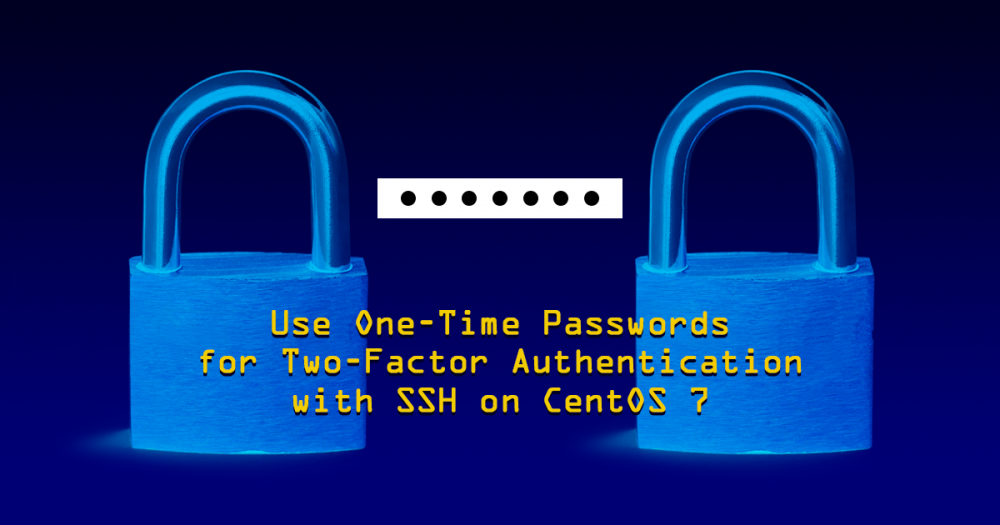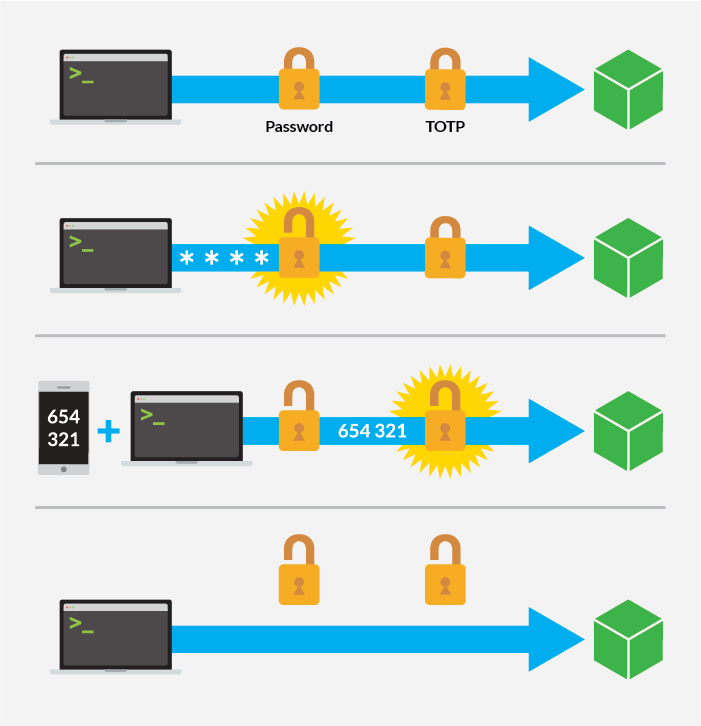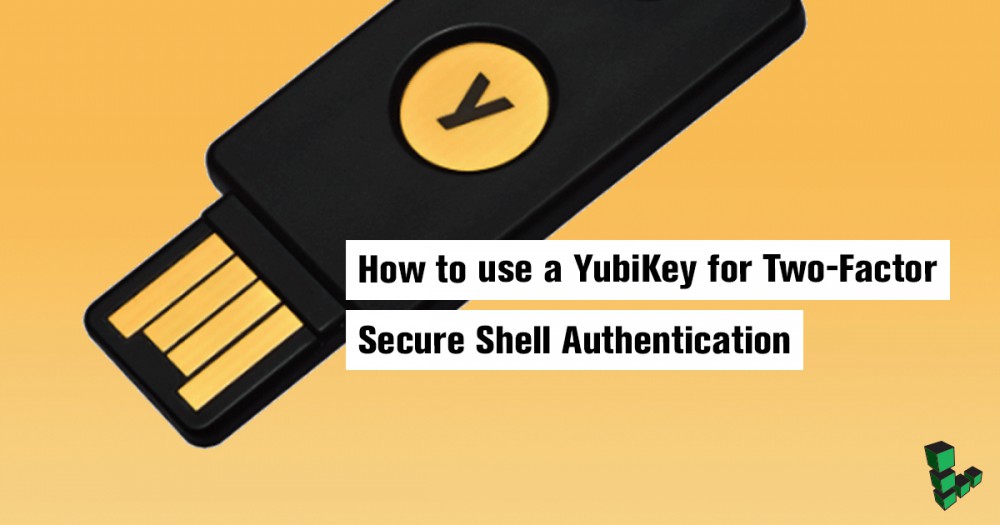Use One-Time Passwords for Two-Factor Authentication with SSH on CentOS 7
In this guide, you’ll learn how to use one-time passwords for two-factor authentication with SSH on CentOS 7.

No matter what kind of data you’re hosting, securing access to your Linode is a critical step in preventing your information from falling into the wrong hands. By default, you will need a password to log in, and you may also configure a key pair for even greater security. However, another option exists to complement these methods: time-based one-time passwords (TOTPs).
TOTPs allow you to enable two-factor authentication for SSH with single-use passwords that change every 30 seconds. By combining this method with a regular password or publickey (or both), you can add an extra layer of security, further ensuring your server is sufficiently protected.
This guide will explain how to install the necessary software, configure your system to use two-factor authentication (2FA), and use your new time-based one-time password (TOTP) in combination with existing security features.
Before You Begin
-
This guide is meant to be used with Linodes running CentOS 7. Familiarize yourself with our Getting Started guide and complete the steps for setting your Linode’s hostname and timezone.
-
Complete the sections of our Securing Your Server to create a standard user account, and remove unnecessary network services. This guide will explain a different way to harden SSH access, but you may use a keypair in addition for even greater protection.
-
You will need a smartphone or another client device with an authenticator application such as Google Authenticator or Authy. Many other options exist, and this guide should be compatible with nearly all of them.
-
Update your system:
sudo yum update && sudo yum upgrade
Note
This guide is written for a non-root user. Commands that require elevated privileges are prefixed withsudo. If you’re not familiar with thesudocommand, you can check our Users and Groups guide.
Install OATH Packages
In this section, we’ll review the software packages you’ll need to install to set up two-factor authentication on CentOS 7. This software will generate keys on your Linode, which will then be paired with an app on a client device (often a smartphone) to generate single-use passwords that expire after a set period of time.
To install the necessary packages enable the EPEL repository, which hosts the package you’re looking for:
sudo wget https://dl.fedoraproject.org/pub/epel/epel-release-latest-7.noarch.rpm
sudo rpm -Uvh epel-release-latest-7.noarch.rpm
Next, install the packages that you’ll be using to generate keys and passwords:
sudo yum install liboath gen-oath-safe pam_oath
CentOS 7 uses several OATH libraries to generate its keys. The TOTPs it generates are compatible with Google Authenticator as well as a variety of other popular authentication apps.
Generate a Key
Now that the packages have been installed, you’ll use them to generate keys. Software on client devices use these keys to generate TOTPs. To understand the difference between these passwords and the ones you already use, let’s break down the TOTP concept:
- Time-based – The generated password will change every 30-60 seconds. This means that if an attacker tries to use brute force, they’ll almost certainly run out of time before new credentials are needed to gain access.
- One-time – The password will be valid for a single authentication only, thus minimizing the risk of a replay attack. Even if your TOTP is intercepted upon sending it to the server, it will no longer be valid after you’ve logged in.
The following instructions will allow you to specify a user for whom you’d like to generate a password. If you are configuring two-factor authentication for multiple users, follow these steps for each user.
Note
Be sure to have your phone or mobile device ready, since this is where you’ll add the password to your authenticator app. If you haven’t downloaded an authenticator app, do so before proceeding.
-
Generate a key:
gen-oath-safe example-user totpReplace
example-userin the above command with the username for which you’re enabling two-factor authentication. Thetotpoption specifies a time-based one-time password, as opposed to a counter-based password. -
A QR code will appear in your terminal, which you can scan with your mobile device to set up your password:

You’ll also notice some additional information displayed above and below the QR code. Notably, the secret key in the line beginning with
URIprovides you with a hex code that you can use to manually configure the code on your device. You’ll also see another hex code on a line containing the username. That second hex code will resemble the following:HOTP/T30 example-user - 961497ad4942e19507006c1e849ab271c1f1cb75 -
Copy the above line into a new file,
/etc/liboath/users.oath, which will store the key for each user:echo 'HOTP/T30 example-user - 961497ad4942e19507006c1e849ab271c1f1cb75' | sudo tee /etc/liboath/users.oath -
Repeat this process for each user for whom you wish to create a unique two-factor key, or repeat the previous step, replacing the username, to use the same key for multiple users.
-
Before you log out, review the Configure Authentication Settings section (below) carefully to avoid getting locked out of your Linode.
Congratulations! You have finished generating your key and adding it to your client, but some additional configuration is needed before these settings will go into effect. Carefully read the following section in this guide for instructions on how to require two-factor authentication for all SSH login attempts.
Configure Authentication Settings
The TOTP authentication methods in this guide use PAM, or Pluggable Authentication Modules. PAM integrates low-level authentication mechanisms into modules that can be configured for different applications and services. Because you’re using additional software (i.e., programs that aren’t built into the Linux distro), you’ll need to configure PAM to properly authenticate users.
Caution
It is strongly recommended that you have another terminal session open while configuring your authentication settings. This way, if you disconnect to test authentication and something is not properly configured, you won’t be locked out of your Linode. You can also use Lish to regain access.
-
Open
/etc/pam.d/sshdwith sudo privileges, and add the line from those below that referencespam_oath.so(it has been marked by a comment here for clarity, but you can omit everything following the#). The surrounding lines are included for context, but they should not be modified. The line must be added between the lines specified here:- /etc/pam.d/sshd
-
1 2 3 4auth required pam_sepermit.so auth substack password-auth auth required pam_oath.so usersfile=/etc/liboath/users.oath window=10 digits=6 #Add this line auth include postlogin
This line specifies four criteria: the PAM OATH module as an additional method of authentication, the path for the users file, a window that specifies which passphrases will be accepted (to account for potential time syncing issues), and a verification code length of six digits.
Note
If you follow the rest of the instructions and find that you are still unable to connect, try adding
debug=1to the end of thepassword-authline to provide you with more information when your authentication fails:- /etc/pam.d/sshd
-
1auth required password-auth debug=1
-
Edit
/etc/ssh/sshd_configto include the following lines, replacingexample-userwith any system user for which you’d like to enable two-factor authentication. Comments (preceded by #) are included here, but should not be added to your actual configuration file:- /etc/ssh/sshd_config
-
1 2 3 4 5 6 7 8# This line already exists in the file and should be changed from 'no' to 'yes' ChallengeResponseAuthentication yes ... # These lines should be added to the end of the file Match User example-user AuthenticationMethods keyboard-interactive
If you created TOTPs for multiple users and you’d like to have them all use two-factor authentication, create additional
Match Userblocks for each user, duplicating the format shown above.Note
If you want to enforce two-factor authentication globally, you can use theAuthenticationMethodsdirective by itself, outside of aMatch Userblock. However, this should not be done until two-factor credentials have been provided to all users. -
Restart the SSH daemon to apply these changes:
sudo systemctl restart sshd
Congratulations! Two-factor authentication is now enabled. When you connect to your Linode via SSH, the authentication process will proceed as follows:

Note
If your SSH client disconnects before you can enter your two-factor token, check if PAM is enabled for SSH. You can do this by editing/etc/ssh/sshd_config: look forUsePAMand set it toyes. Don’t forget to restart the SSH daemon.
Combine Two-Factor and Public Key Authentication
This section is optional. If you’d like to use public key authentication instead of a password with TOTP, follow these steps:
Note
Confirm that your public key has been copied to your Linode before completing this section. View installed SSH keys by enteringssh-add -lin your terminal.
-
Set
PasswordAuthenticationtonoand modify theAuthenticationMethodsline in/etc/ssh/sshd_config:- /etc/ssh/sshd_config
-
1 2 3 4PasswordAuthentication no ... Match User example-user AuthenticationMethods publickey,keyboard-interactive
Configure this setting in the
AuthenticationMethodsdirective for each user as appropriate. When any of these users log in, they will need to provide their SSH key and they will be authenticated via TOTP, as well. Be sure to restart your SSH daemon to apply these changes. -
Next, you’ll need to make changes to your PAM configuration. Comment out or omit the following line in your
/etc/pam.d/sshdfile:- /etc/pam.d/sshd
-
1# auth substack password-auth
That’s it! You should now be able to log in using your SSH key as the first method of authentication and your verification code as the second. To test your configuration, log out and try to log in again via SSH. You should be asked for your 6-digit verification code only, since the key authentication will not produce a prompt.
Caution
If you or a user on your system use this method, be sure that the SSH key and authenticator app are on different devices. This way, if one device is lost or compromised, your credentials will still be separate and the security of two-factor authentication will remain intact.
Next Steps
First, be sure you have followed our guide to Securing Your Server. Although there is no single, foolproof method to protect your data, firewalls and services like Fail2Ban are a great means to minimize risk.
When you use two-factor authentication with TOTPs, an important point to consider is the physical security of the device on which you’ve configured your authenticator app. Be sure your phone or device is secured with a passphrase, so that even if it falls into the wrong hands, it can’t easily be used to compromise your server. If you lose the phone or device that stores your credentials, you can use Lish to access your Linode and disable two-factor authentication. If this happens, you should switch to a different, hardened method of SSH access, such as public key authentication, in the interim.
While two-factor authentication may be a valuable security feature, total security is an ongoing process not an end goal that can be achieved by adding extra layers of authentication. To provide the best protection for your data, take care to follow security best practices at all times.
More Information
You may wish to consult the following resources for additional information on this topic. While these are provided in the hope that they will be useful, please note that we cannot vouch for the accuracy or timeliness of externally hosted materials.
- One-Time Passwords
- Linux PAM Documentation
Join our Community
Find answers, ask questions, and help others.
This guide is published under a CC BY-ND 4.0 license.






